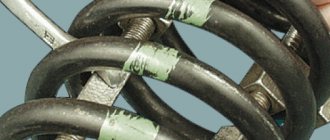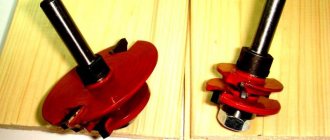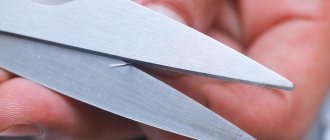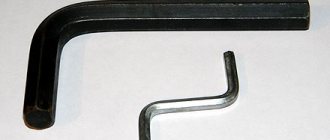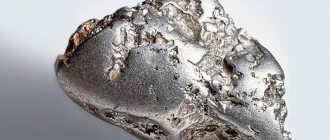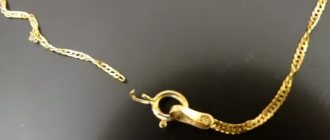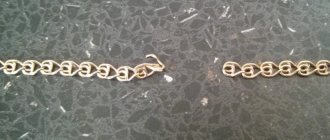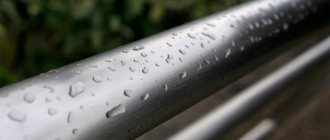Neodymium magnets have powerful attraction and stable magnetic field. They have high resistance to demagnetization and retain their properties for a long time.
The scope of application of neodymium magnets is quite wide, so having such an item always at hand will be very useful. It turns out that they are contained in headphones, stepper motors and other devices. To get a neodymium magnet at home, just disassemble the device using a regular screwdriver.
Hard drive for computer
Used data storage hard drives contain more powerful neodymium magnets. To disassemble the device, it is best to use older models released for PC. In modern devices, magnets are not very powerful, but they also have all the characteristics and properties.
The magnetic plate in appearance resembles a horseshoe measuring 3-4 mm, so disassembling the device should be done very carefully. The alloy is brittle and is firmly connected with an adhesive base to a steel platform. Because of this feature of the fastening, to disassemble the hard drive you will need to arm yourself not only with a screwdriver, but also with risks and another heavy object such as a hammer or chisel.
How to get it:
- One end of the plate must be firmly secured in a vice, and a strong but gentle blow must be applied to the opposite end.
- Pry the end of the magnet with a chisel and remove it from the device.
- If the neodymium is glued, it will be possible to slightly heat the plate. However, you cannot increase the temperature too much, otherwise the magnet will lose its basic properties.
The CD/DVD drive is disassembled in a similar way.
Headphones CD or DVD drive
Surely everyone has old headphones. Most of these devices do not last long, and many music lovers replace them several times a year. If we are talking about ordinary earbuds bought at a hardware store, the magnet there is small and resembles a microbattery the size of a tablet. At the same time, the tearing strength of such parts is impressive. Using such a magnet, for example, you can hang fairly large pliers or cutlery.
Where else can you get a neodymium magnet at home? In the optical head of any digital player, which usually contains 2 magnetic plates. Depending on the manufacturer, they can vary, but they are almost always tiny, rectangular-shaped devices, little larger than a SIM card.
Engines and generators
The most popular device that can be used to extract neodymium is a stepper motor. It can be found inside any office equipment that has broken down.
Usually in motors the magnet is located among the rotor elements. The magnetic ring is placed on a rod and sandwiched between plastic wheels. To remove the part, a vice and a screwdriver are suitable, which you need to carefully knock out the axle.
It is important to remember that the alloy is brittle and breaks easily. That is why during operation it is necessary to firmly clamp only one upper gear. If the magnetic ring is secured with glue, you will need to heat the part with a hairdryer or lightly tap it with the back of a screwdriver.
Neodymium rings are not found in older model engines, which previously used a conventional ferromagnet. It is also quite powerful and can be used for a variety of purposes.
Loudspeakers
You can also get magnetic components from so-called “columns”. However, if you google “neodymium magnets - where to get them in everyday life”, you will not find many instructions on how to disassemble such equipment. There are two main reasons here. Firstly, the speakers of acoustic systems rarely break, and if they do, they can often be repaired. Secondly, they often contain ferrite rings, while neodymium alloys are used only by some manufacturers in modern, and usually expensive, loudspeakers.
Above we described only some options on the topic “where to get neodymium magnets in everyday life,” videos and other articles on our website, we hope, will help you in finding magnetic products.
Peculiarities
To prevent exposure to environmental conditions, the magnets are coated with a protective compound. Typically these are two layers of nickel or an improved version with an additional layer of copper in between. Another important feature is that neodymium magnets begin to demagnetize at temperatures above 70 °C. Exceeding the limit values can lead to a complete loss of properties and the alloy turning into just a piece of metal.
The specifics of the material require special safety measures during operation. Thus, neodymium magnets 50x30 mm have an adhesion force of 100 - 115 kg, and 70x50 mm up to 300 kg
If handled carelessly, they can cause harm: pinching fingers, injuring the skin, damaging bones. In the event of an uncontrolled collision of two magnets, the material may crumble with the formation of sharp fragments that can injure the eyes
Household use
Neodymium magnets in everyday life can be used for the following purposes:
- Cleaning working fluids in a car. It is enough to install a magnet on the crankcase drain plug - and metal dust from the oil will be easily removed. An important point is that you need to use a SH series product that is resistant to high temperatures (the liquid heats up to 100 degrees Celsius).
- Repair of musical instruments. If your child or you yourself play the trumpet or other wind instrument, then you probably know that any deformation negatively affects the sound. You can return the product to its original geometry using NdFeB.
- Cleaning aquariums. Even if you properly care for the watery corner of wildlife in your home, plaque will still appear on its internal surfaces due to constant contact with water. The problem can be solved using two neodymium plates and a sponge.
- Search for objects. It is extremely difficult to collect scattered small hardware from the floor. Neodymium products can help with this. Just pass them over the floor surface, and all scattered fasteners will be magnetized.
- Retainers. Hand tools for household repairs, kitchen utensils with metal handles - all this can be organized and conveniently placed using magnetic plates or other NdFeB products.
Also, magnetism often attracts young children, so products can become a source of experimentation for them.
In this case, you need to use not very powerful products to avoid injury. Previous: Weight of neodymium magnets Next: Cost of neodymium magnets
Compound
Magnets based on this rare earth metal are designated by the formula Nd2Fe14B. The composition includes neodymium (Nd), iron (Fe), boron (B). The peculiarity of the technology is that this rare earth metal is difficult to isolate in its pure form. The sintering process with the remaining components in powder form must take place in an inert environment. Otherwise, its rapid oxidation occurs with loss of properties.
The technology for normal conditions is complex, so trying to make neodymium magnets with your own hands is impractical. Products are marked during production. The number after the letter N (25, 30, 45) indicates the code. The higher the indicator, the stronger the magnetic properties of the material. The maximum operating temperature of the magnet also depends on the number.
Magnets on sale
In fact, magnets can be found in the most unpredictable places. These could be knife holders in the kitchen, wall clocks, various figurines, jewelry, and decorative items. In general, any objects that have magnetic properties can contain neodymium. The question is whether a magnet found at home in a household appliance or hard drive is suitable in terms of power and size... Also, industrial magnets are made with a thread or hole of the required shape and diameter. If a neodymium magnet is needed for business, then it is better to think about buying a real large magnet.
Is it possible to create a neodymium magnet yourself?
Many have wondered about creating such a magnet at home, but, unfortunately, it will not be possible to create such a device at home. The most advanced technologies, equipment and tools are used to produce such magnets. Therefore, it will definitely not be possible to create such a device without special tools. The magnet itself is made in an interesting way, the material for manufacturing is crushed, then sintered in special furnaces and then it is given the power of a magnet. Therefore, it will not be possible to repeat this at home. But many people don’t even realize that neodymium magnets are found in household devices and various appliances, and after the device fails, the magnet can be removed and used for various purposes.
How to make the most powerful magnet yourself
The most powerful magnets in the world are made from the rare earth metal neodymium. Iron, neodymium and boron are powdered, mixed, shaped and sintered in microwave ovens. Then the workpieces are magnetized and a protective coating of zinc or nickel is applied. It is very difficult to repeat this process at home. But there is another way.
The first step towards realizing the goal is to find broken computer hard drives. If you don’t have a broken hard drive on your household, you can try to find non-working devices on Avito, Darudar or other classifieds sites.
Magnetic head in an open hard drive
Of course, the easiest way is to buy a neodymium magnet of the desired shape and strength. On the other hand, if you have several non-working hard drives, then it would be extremely imprudent to simply throw them away.
The World of Magnets online store offers you to buy neodymium magnets at the most attractive prices. Select suitable products from the presented catalog and place an order. Purchasing finished products with the necessary parameters is always easier, faster and more profitable than trying to make neodymium magnets yourself.
Source
What can you catch?
Fragments of historical monuments - knives, weapons from the times of the Great Patriotic War - are often recovered from the bottom of lakes and rivers. A magnet with good attractive force will pull out hidden treasures in wells and garbage pits. Cossack sabers were repeatedly raised from the Dnieper. All products containing iron and ferromagnetic metals will be attracted to the magnet.
Pure gold is not magnetized, but such jewelry also contains a ligature (a mixture to impart strength). For example, products of 585 standard contain 41.5% other metals, including nickel, which is highly attractive.
You can also find silver, but not all its varieties can be raised. Sets of past centuries, with the addition of ligature, are often mined from the depths of centuries-old lakes.
Stainless steel is magnetic to varying degrees, depending on the alloys added. Aluminum, brass, bronze, tin, lead and copper will not be attracted.
Often in your finds you can find metal sealed cylinders worn by German soldiers. They kept their valuables in them.
Places to find relics
Ideal search places are military crossings and centuries-old bridges. Valuable finds can be discovered when examining mill whirlpools and pre-revolutionary wells. The drains, cesspools and station toilets surprise you with their artifacts.
Search for valuable coins
Only cheap royal change will not be attracted to the magnet, but medium-denomination coins made with an admixture of nickel and chromium will delight their treasure hunter. You shouldn't count on expensive coins, because... They were made of gold and silver, which means they are very weakly magnetized.
Application
Traditionally, they are used in electronic devices and devices where it is necessary to create a constant magnetic field. The properties of the material make it possible to successfully use them when searching for and lifting metal objects from the bottom of reservoirs. Such structures, in addition to the eye for fastening the cable, are equipped with an eye bolt, which is simply necessary, since when screwed in, it allows you to separate two strongly adhered surfaces.
Magnets are available in sizes from 1 to 120 mm in diameter and in different thicknesses and shapes. The thinnest of them are widely used in the leather goods and furniture industries. They can be found in funny toys and devices for hanging various utensils. Powerful magnets are indispensable for filtering bulk and liquid materials. They are used to catch metal impurities and foreign objects in the conveyor flow.
The high adhesive force encourages people to use them to achieve “savings” when using water and gas. By purchasing neodymium magnets for counters, they thus try to stop or slow down the rotation of their mechanism. This possibility theoretically exists in devices where steel elements are used internally. A powerful magnet placed in a specific location on the housing can slow down the rotation of the impeller.
Accessories for search magnets
Thanks to proper use, transportation and storage, the search magnet will last a long time and will not lose its properties ahead of schedule. Accessories protect the unit from environmental influences and ensure efficient use and transportation.
Ropes for search magnets
Chinese cord and clothesline are the first step to failure. They only look very strong, but in practice they will break during the first dive. An “accident” will happen even if the object is too heavy or simply caught on a snag.
In order not to lose the magnet on your first “fishing”, you need to use a very strong rope
When choosing, it is important to consider its characteristics. For example, if the search involves a magnet capable of pulling out an object weighing 400 kg, then the breaking capacity of the cord should be no less
Particular attention should be paid to the diameter, it should be at least 0.4-0.5 cm. But the length depends on the scale of the search; rope of 10-15 meters is in great demand
Ways to bind a search magnet
The main secret of success is proper lacing. Initially, you need to tie the magnet with a constrictor knot, use a surgical one a little higher, and secure it all with an academic one. Pull and cauterize the end. Tie the cord on your hand so you don’t miss it when casting.
Options for making simple magnets with your own hands
The simplest electromagnet made from wire, batteries and a nail.
We take a metal blank and wrap it with copper wire. A total of 300 turns should be obtained. We connect the ends of the wire to a battery or accumulator. As a result, the metal workpiece will become magnetized. How strong its field will be depends on the power of the current coming from the power source.
Method 2
First you need to make an inductor coil. The future magnet is placed inside it, so a compact size blank is used. The procedure is exactly the same, except for the fact that the number of turns of wire should not be 300, but 600. This method is good if you need to make a magnet of increased power.
Copper wire on a ferrite magnet
Involves the use of mains electricity. The method is quite complex and dangerous, so manipulations must be verified and careful. A fuse is added to the standard set of accessories, without which it will not be possible to create a magnet. It is this that is connected to the inductor coil, inside of which there is a metal workpiece. The fuse is connected to the network. As a result, it burns out, but at the same time manages to charge the object inside the coil to high levels.
Be careful!
Such experiments pose a danger to life and often lead to a short circuit in the electrical network! When choosing this method of manufacturing magnetic elements, take the necessary precautions and prepare a fire extinguisher that will allow you to quickly extinguish a possible fire.
A special magnetometer will help you evaluate the result of the work - it will show how strong the resulting product is.
Magnetic square made of hard drives (HDD)
Not everything is in the photo! Only those that I “sentenced” when I conceived this homemade product!
Some are out of order. Others are simply outdated. (By the way, there is a general trend towards a decrease in quality: modern hard drives fail quite often. Old ones, with one or two gigabytes (or even much less), are all fine. But they can no longer be used - they have a very low read speed information. And they have very little memory. So it’s not worth it.
. But you can’t even raise your hand to throw it away! And I often wondered what could be made from them, or how to use them.
. On the web upon request. from the hard drive” there are mainly “super-talented” ideas for creating a sharpener. People with a serious look show how to trim the case, cover the disk itself with sandpaper, and make a super-cool sharpener, powering it from a computer power supply, and using the hard drive’s own motor!
. I haven't tried it. But I think it will be possible to sharpen on such a sharpener. well, maybe nails. And even then, if you don’t press too hard!!
And now, when I was making a magnetic angle for welding, I remembered that hard drives have powerful neodymium magnets. And since during welding work “there can never be too many squares,” then, upon completion of the last homemade project, I immediately disassembled one of the hard drives to see what I could operate with)))
The magnet (I pointed to it with a red arrow) is glued to a metal bracket, which, in turn, is secured with a screw.
To begin with, I decided to search the Internet to see if anyone had already invented this method of making welding angles?! ))) It turned out, yes! We've already made these devices from hard drives! But there the man simply placed a wooden board between the metal plates, to which he screwed magnets. I immediately rejected this method for several reasons:
Firstly, the combination of “arc welding + wood” is not very good!
Secondly, at the ends of these squares a rather complex shape is obtained. And it will be very difficult to clean them! And he will take on a lot. Let me give you an example of a photo from my last publication. They have a weak magnet on them, and this one, after lying on the workbench where they worked with metal:
And thirdly, I didn’t like that the square had very wide ends. That is, when welding some structures whose components are narrower than itself, it cannot be used.
Therefore, I decided to go a different route. Make, like the “wooden” one, not the template plates of the case, but the end itself between them, but make this end smooth and closed.
In a previous publication, I already wrote that all magnets have poles, which, as a rule, for permanent magnets are located on wide planes. It is not advisable to “short” these poles with magnetic material, so this time I decided to make the side plates of the case from a non-magnetic material, and the end plate from a magnetic one! That is, “exactly the opposite”)))
So what I needed:
1. Neodymium magnets from old computer hard drives. 2. Non-magnetic stainless steel plate (for the housing). 3. Thin magnetic steel. 4. Blind rivets.
First of all, I started making the case. I had this piece of stainless steel sheet. (I don’t know the brand, but steel does not stick to a magnet).
Using a plumber's square, I measured and cut out two right triangles with a grinder:
I also cut the corners of them (I forgot to take a photo of this process). Why cut the corners, I already said - so as not to interfere with welding work.
I made the precise adjustment of the corners manually on a piece of emery cloth spread along the plane of a wide profile pipe:
Periodically, I put the workpieces into the square and looked “at the light.” After the corners were out, I drilled holes for the rivets, connected the plates through them with M5 screws, and checked the corners again! (The requirements for accuracy here are very high, and when drilling holes, I could make an error).
Next, I started making the magnetic plate itself, which, as I already said, I want to place at the end of my square. I decided to make the thickness of the square 20 mm. Considering that the side plates are 2 mm thick, the end plate should be 16 mm wide. To make it, I needed thin metal with good magnetic properties. I found it in the case of a faulty computer power supply:
This is where the magnets will be placed. But here one problem arose: the magnets, having a curved shape, do not fit into the width of my plate.
(A little about the magnets themselves. Unlike acoustic speakers, hard drives use not ferrite, but so-called neodymium magnets. They have a significantly higher magnetic force. But, at the same time, they are more fragile - although they are They look like solid metal, they are made of sintered rare earth metal powder. And they break very easily. In a hard drive, they are glued to a steel chassis, which, in turn, is already screwed on.)
I did not peel off the magnets from the steel plates - I only need one working plane from them. I simply cut off the protruding plates with a grinder, and a little of the magnets themselves.
In this case, a regular abrasive wheel (for steel) is used. Rare earth metals have the property of spontaneously igniting in air in a highly crushed state. Therefore, do not be alarmed - the “fireworks” of sparks will be much stronger than expected.
I remind you.
Permanent magnets are afraid of strong heat!!
And especially - sudden heating! Therefore, when cutting, they MUST be cooled! I simply placed a container of water next to it, and periodically lowered the magnet into the water after making a small cut. So, the magnets are cut off. Now they fit on the strip.
Inserting long M5 screws into the holes for the rivets and securing them with nuts, I bent the following complex structure around the perimeter of the template plate:
It is on this that the magnets will be located inside:
Since the plate itself will be fixed only in places where rivets pass through it, it will “spring” a little. That is, the magnets will attract it to the workpiece with its entire plane.
The next step is painting. There was no need to paint it. The stainless steel was decoratively polished, and the appearance was at a sufficient level.
But the fact is that in this case, painting is needed not so much for decorative purposes, but for practical ones: when working with metal, the square should not get lost among the many metal structures! Moreover, it can easily be accidentally carried away, stuck to the metal! That is why it should be bright in color:
After the paint has dried, all that remains is to assemble the structure together. I did this using 25 mm long blind rivets.
I didn’t measure its force, but it is much stronger than the previous one made from a speaker.
We are planning to make another type of magnetic welding angle. This time - from neodymium magnets purchased on Ali Express. The parcel is still on its way. When it arrives, I will definitely introduce you to my idea!)))
Old CD/DVD drive
Another popular way to get hold of a neodymium magnet is to disassemble an old CD drive. In this case, the magnet is located in the optical head. You'll have to get it. This method is notable for the fact that you can get not one, but two small neodymium magnets at once. The magnets from the drive are (most often) rectangular in shape.

